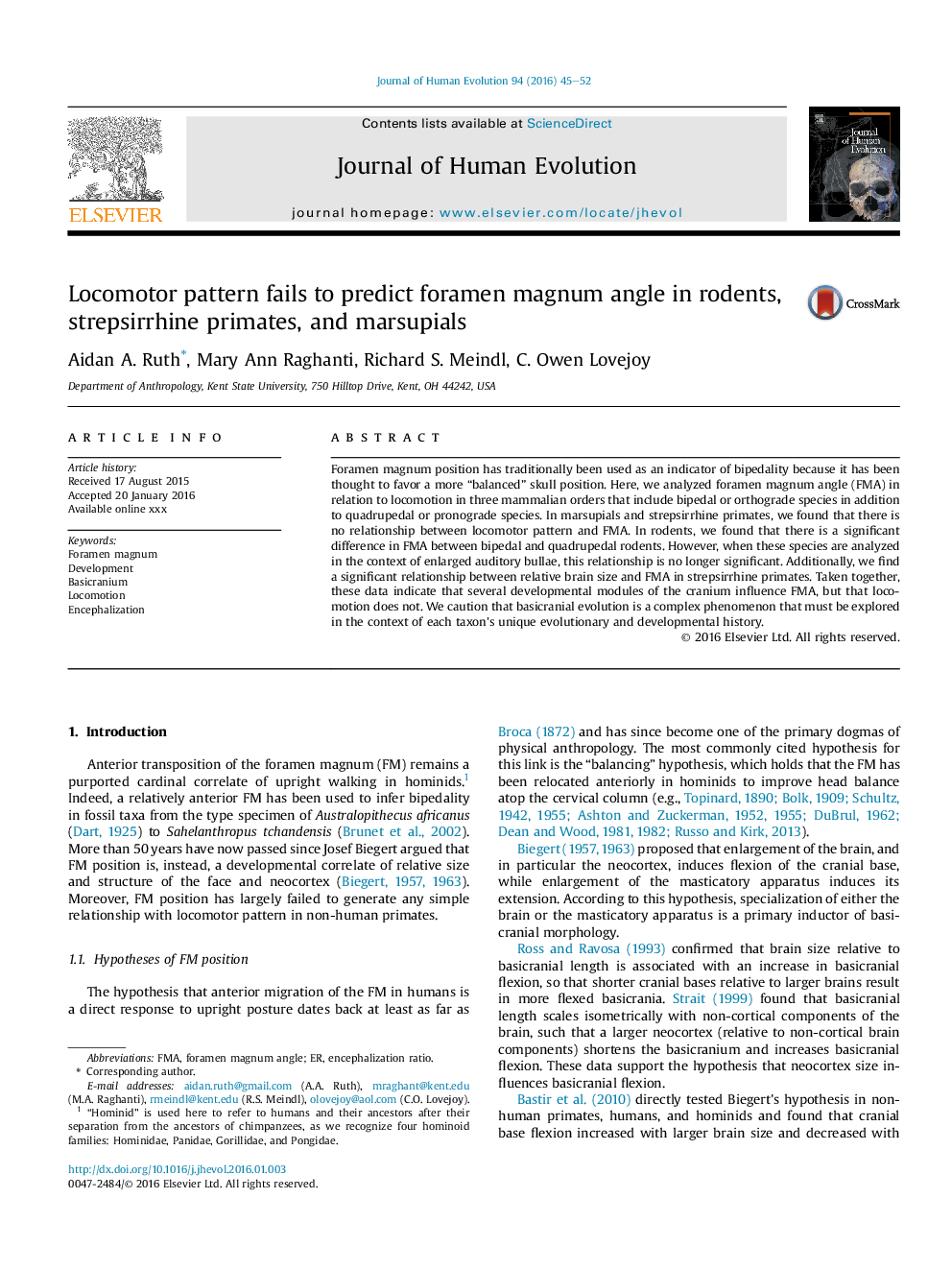| Article ID | Journal | Published Year | Pages | File Type |
|---|---|---|---|---|
| 6389096 | Journal of Human Evolution | 2016 | 8 Pages |
Abstract
Foramen magnum position has traditionally been used as an indicator of bipedality because it has been thought to favor a more “balanced” skull position. Here, we analyzed foramen magnum angle (FMA) in relation to locomotion in three mammalian orders that include bipedal or orthograde species in addition to quadrupedal or pronograde species. In marsupials and strepsirrhine primates, we found that there is no relationship between locomotor pattern and FMA. In rodents, we found that there is a significant difference in FMA between bipedal and quadrupedal rodents. However, when these species are analyzed in the context of enlarged auditory bullae, this relationship is no longer significant. Additionally, we find a significant relationship between relative brain size and FMA in strepsirrhine primates. Taken together, these data indicate that several developmental modules of the cranium influence FMA, but that locomotion does not. We caution that basicranial evolution is a complex phenomenon that must be explored in the context of each taxon's unique evolutionary and developmental history.
Related Topics
Life Sciences
Agricultural and Biological Sciences
Ecology, Evolution, Behavior and Systematics
Authors
Aidan A. Ruth, Mary Ann Raghanti, Richard S. Meindl, C. Owen Lovejoy,
